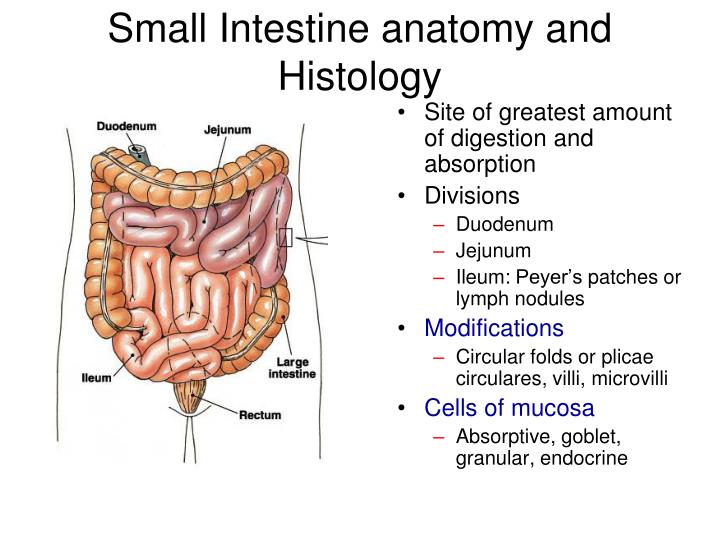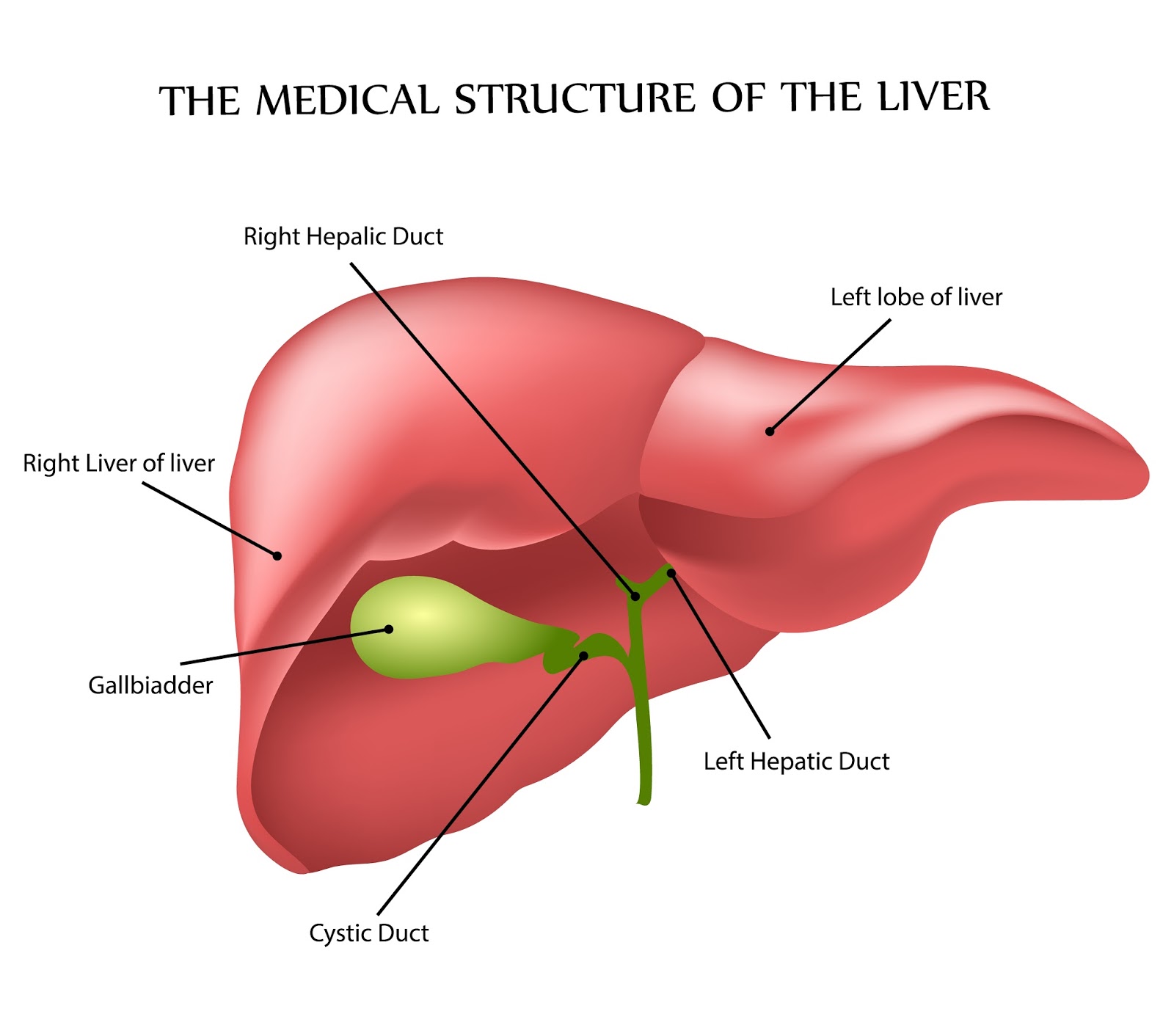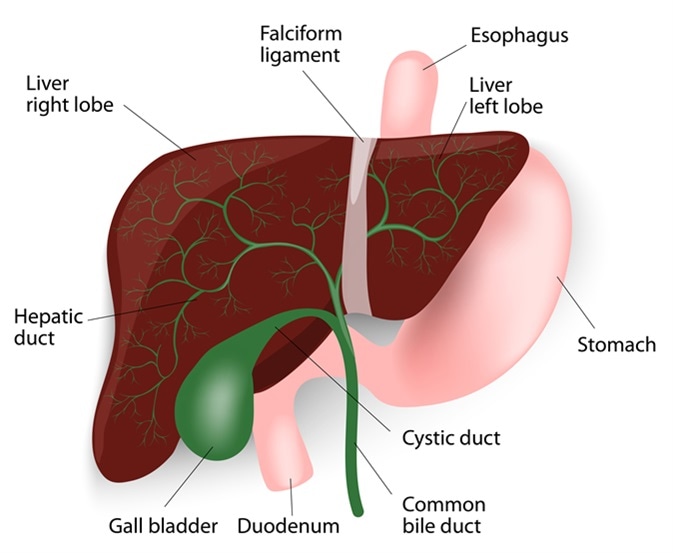Digestion system and nutrition
- Created by: Charlotte170289
- Created on: 10-01-21 13:25
why we need to understand the digestive system
- Pathologies (tumours)
- Trauma/surgical procedures
- Absorption of medications
- Nutrition/ growth in children
- Behaviours/ social impact due to disorders: constipation/diarrhoea, anxiety/obesity/eating disorders
The main components
- Mouth- (soft and hard palate, tongue, salivary glands, oropharynx, larynx)- Ingestion, mechanical digestive with accessory organs (teeth and tongue), moistening, mixing with salivary secretions.
- Pharynx- Muscular propulsion of materials into the esophagus
- Esophagus- Transport of materials to the stomach
- Stomach- Chemical digestion of materials by acids and enzymes: mechanical digestion through muscular contractions
- Small interstine- Enzymatic digestion and absorption of water, organic substances, vitamins and ions
- Large intestine- Dehydrates and compaction of indigestible materials in preparation for elimination
- Rectum/anus- removing waste
Accessory organs:
- Teeth- mechanical digestion by chewing (mastication)
- Tongue- Assists mechanical digestion with teeth, sensory analysis
- Salivary glands- Secretion of lubricating fluid containing enzymes that break down carbohydrates.
- Liver- secretion of bile (important for lipid digestion), storage of nutrients, many other vital functions
- Gallbladder- Storage and concentration of bile
- Pancreas- exocrine cells secrete buffers and digestive enzymes; endocrine cells secrete hormones
The digestive system

The main functions
Top to bottom
- Ingestion- takes place when food enters the oral cavity. Ingestion is an active process involcing choices and decision making
- Mechanical processing- Involve the crushing and shearing of food and then propelling the food along the digestie tract. Tearing and mashing with the teeth, followed by squashing and compression by the tongue. Swirling, mixing and churning motions of the stomach and intestines provides mechanical digestion. Mechanical digestion also inreases the surface area of ingested materials making them more susceptible to the action of enzymes.
- Digestion- the chemical breakdown of food into small organic and inorganic molecules suitable for absorption by the digestive epithelium. Simple molecules such as glucose can be absorbed intact.
- Secretion- is the release of water, acids, enzymes, buffers and slats by the epithelium of the digestive tract, glandular organs and gallbladder. The glandular organs and gallbladder secrete their produces into the ducts that empty into the digestive tract.
- Absorption- is the movement of organic molecules, electrolytes (inorganic ions), vitamins, minerals and water across the digestive tract for distribution to body cells.
- Excretion- is the elimination of wastes from the body. The digestive tract and glandular and secretory organs discharge wastes in secretions that enter the lumen of the tract. Most of the waste is mixed with the indigestible food of the digestive process.
Sometimes known as the GI
GI- gastrointestinal tract
The digestive system consists of a muscular tube, the digestive tract, also called the gastrointestinal tract (GI) and various accessory organs. The digestive tract begins with the oral cavity (mouth). It continues through the pharynx (throat), esphagus, stomach, small intestine and large intestine, which opens to the exterior at the anus.
Accessory digestive organs include the teeth, tongue and various glandular organs, such as the salivary glands, liver and pancreas, as well as the gallbladder, which only has a secretory function.
These structure have overlapping functions that all contribute to the main function of the digestive system, which is to break down food, absorb nutrients that can be used by body cells, and eliminate the remaining waste. However, each of these structures also has certain areas of specialization and so shows distinctive histological characteristics.
Depening where symptoms are will determine which speciality will treat a patient (upper (GI) tract and lower (GI) tract).
Movement through the tract
Movements along the muscular tract:
involuntary movement of smooth muscle.
2 main types of movement:
- Peristalsis- propels materials alonf the tract
- Segmentation- churns material in the small intestine
Oral cavity
The functions of the oral cavity include
- Sensory analysis of food before swallowing
- Mechanical digestion throught the actions of the teeth, tongue and palatal surfaces
- Lubrication by mixing with mucus and saliva
- Chemical digestion of carbohydrates and lipids.
- Enzymatic digestion by enzymes in saliva
This is where the process of digestion begins
oral cavity

The pharynx
- The pharynx or throat is an anatomical space that serves as a common passageway for solid food, liquid and air.
- Food normally passes through parts of the pharynx on its way to the oesophagus
- These regions have a lining of stratified squamous epithelium similar to that of the oral cavity.
This membrane cavity sits behind the nose/mouth and is connected to the oesophagus. Its functions are dual purpose for respiratory and digestive system:
- Air for respiratory from the nose
- food from the mouth for digestion
Pharyngeal muscles propel food and fluid along the oesophagus towards the stomach during swallowing.
Oesophagus
- The oesophagus actively moves ingested materials down towards the stomach.
- The oesophagus is approximately 25cm in length and has a diameter of about 2cm at its widest point.
- The walls of the oesophagus contains a mucosa, submucosa and muscular layer.
- The main functions of the oesphagus is to transport substances from the mouth to the stomach
- The upper and lower oesophageal sphincters (a sphincter is a circular band of muscle that can close a muscular tube when required)
Stomach
The stomach is an expandable tubelike ogan found in the upper left quadrant of the peritoneal cavity.
The major functions of the stomach are to
- Temporarily store ingested food received from the oesophagus
- Mechanically digest food through muscular contractions
- chemically digest food through the action of acid and enzymes.
- churns, mixing and mechanical breakdown of content to mix with gastric juices
- Secretes acids and enzymes to start digestion of food
- Mucus protects the stomach lining
- Supports onward peristalsis towards the duodenum (small intestine)
The small and large intestine

Small intestine
Small intestine also known as the small bowel averages 6m in length. The small intestine fills much of the peritoneal cavity.
The small intestine consists of 3 sections:
- Duodenum- is the segment closes to the stomach. This portion receives chyme from the stomach and digestive secretions from the pancreas and liver. It is the short portion that connects to the stomach.
- Jejunum- joins the duodwnum, It has many folds, increasing surface are to absorb nutrients.
- Ileum- Follows on from the jejunum, final and longest segment of the small intestine (about 4 metres long)
Large intestine (colon)
The large intestine joins on from the ileum (end of the small intestine) and has 4 regions:
- Caecum
- colon
- rectum
- anus
The colon sometimes used to refer to the whole large intestine.It is wider but shorted than the small intestine about 1.5 metres in length
The main function is to re-absorb water and turn food residue into semi-solid faeces. Absorbs some vitamins, minerals, electrolytes and drugs. Stories faeces prior to defaecation
Defaecation- Rectum & Anus
- Once the compact faeced reach the sigmoid colon a powerful peristaltic contraction forces faeces into the empty rectum.
- The rectal walls distends-stretch receptors are activated
- Reflexes and shrot and long
- Sphincters- internal and external (both must relax for defaecation to occur)
- It is a conscious action
Accessory gland: Liver
The liver has many metabolic, endocrine and de-toxyfying functions. To name a few:
- Synthesis of cholesterol
- Breakdown of insulin and hormones
- Production of bile and carbohydrate metabolism
- Storage of water and fat suluble vitamins and iron
The liver sits in the right upper adbominal cavity. It is viral for life, the largest abdominal organ that weight 1.5KG

Accessory gland: Pancreas
- Approx 12-15cm long
- The cells of the pancreas are responsible for the production of endocrine hormones insulin and glucagon.
- These hormoes control carbohydrate metabolism.
- The pancreas feeds into the small intestine and sits behind the stomach

Accessory gland: Gall bladder
- The gall bladders function is to store bile secreted from the liver until it is needed for digestion
- Holds 30-60ml of bile, it is then releases its content into the duodenum when stimulated during and after meals to aid digestion.
- It is a pear shaped, small green muscular sac. It is not essential for life (cholecystectomy- removal of)

What is nutrition
- The absorption of nutrients from food is called nutrition.
- The process by which food is assimilated into the body in order to nourish it for health, growth and recovery.
- A balance diet- a diet which contains all the ingredients needed to maintain homeostasis and to prevent malnutrition.
- The correct balance of nutrients for optimised bldy function.
Diet and nutrition
Vitamin is an essential organic nutrient that functions as a coenzyme in vital enzymatic reactions. Vitamins are assigned to either of 2 groups based on their chemical structure and characteristice: fat soluble vitamins or water soluble vitamins.
Fat soluble vitamins:
Vitamine A, D, E, and k are the fat soluble vitamins which dissolve in lipids. These vital vitamins are absorbed mainly in the digestive tract along with the lipids contents of micelles. When exposed to sunlight your skin can synthesize small amounts of vitamin D and intestinal bacteria produce some vitamin K.
Water soluble vitamins:
Most water soluble vitamins are components of coenzymes. Water soluble vitamins are rapidly exhanged between the fluid compartments of the digestive tract and the circulating blood. Exessive amounts are readily excreted in urine. Water soluble vitamines e.g. vit C, the daily requirement is about 40 ml/kg body weight i.e about 2 litres per day for a 70kg person. It is sorced from food, drink and aerobic metabolism.
Role of the nurse nutrition
- Assessment
- Assistance/intervention
- Monitoring
- Education
Nutritional assessment
- Observation
- Data recording
- Use of assessment tool e.g. MUST- (Malnutrition Universal Screening Tool)(BAPEN)
- Weight
- History
- State of mouth
- Weight
- BMI
- Skin
- Blood tests
Effects of poor nutrition
- Delayed wound healing
- Increased risk of pressure sores
- Under/over weight
- Delayed recovery from illness/operation etc.
- Specific problems due to lack of i.e. vitamins
- Foetal problems
- Poor development
- Dehydration
Related discussions on The Student Room
- Dietetics MSc funding »
- Life as a student nurse at Bradford »
- Access to HE - to study Dietetics »
- Second degree in dietetics »
- Eligibility for student finance for degree holders »
- no science a level :( »
- help with dissertation topic »
- starting child nursing »
- Has anyone ever been hungry but didn't want to eat? »
- Official University of Winchester 2023 Applicants Thread »
Comments
No comments have yet been made